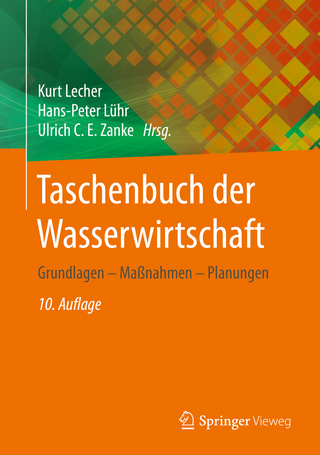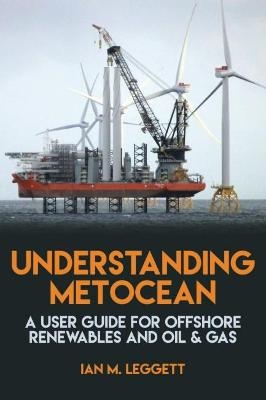
Introduction to Atmospheric Chemistry
Princeton University Press (Verlag)
978-0-691-00185-2 (ISBN)
- Lieferbar (Termin unbekannt)
- Versandkostenfrei innerhalb Deutschlands
- Auch auf Rechnung
- Verfügbarkeit in der Filiale vor Ort prüfen
- Artikel merken
Atmospheric chemistry is one of the fastest growing fields in the earth sciences. Until now, however, there has been no book designed to help students capture the essence of the subject in a brief course of study. Daniel Jacob, a leading researcher and teacher in the field, addresses that problem by presenting the first textbook on atmospheric chemistry for a one-semester course. Based on the approach he developed in his class at Harvard, Jacob introduces students in clear and concise chapters to the fundamentals as well as the latest ideas and findings in the field. Jacob's aim is to show students how to use basic principles of physics and chemistry to describe a complex system such as the atmosphere. He also seeks to give students an overview of the current state of research and the work that led to this point. Jacob begins with atmospheric structure, design of simple models, atmospheric transport, and the continuity equation, and continues with geochemical cycles, the greenhouse effect, aerosols, stratospheric ozone, the oxidizing power of the atmosphere, smog, and acid rain. Each chapter concludes with a problem set based on recent scientific literature.
This is a novel approach to problem-set writing, and one that successfully introduces students to the prevailing issues. This is a major contribution to a growing area of study and will be welcomed enthusiastically by students and teachers alike.
Daniel J. Jacob is the Gordon McKay Professor of Atmospheric Chemistry and Environmental Engineering at Harvard University. He has taught the undergraduate atmospheric chemistry course at Harvard since 1992. He has published over 100 research papers in atmospheric chemistry journals.
Preface xi 1 - Measures of Atmospheric Composition 3 1.1 Mixing Ratio 3 1.2 Number Density 4 1.3 Partial Pressure 8 Further Reading 11 Problems 11 1.1 Fog Formation 11 1.2 Phase Partitioning of Water in Cloud 11 1.3 The Ozone Layer 11 2 - Atmospheric Pressure 14 2.1 Measuring Atmospheric Pressure 14 2.2 Mass of the Atmosphere 14 2.3 Vertical Profiles of Pressure and Temperature 16 2.4 Barometric Law 18 2.5 The Sea-Breeze Circulation 21 Problems 22 2.1 Scale Height of the Martian Atmosphere 22 2.2 Scale Height and Atmospheric Mass 22 3 - Simple Models 24 3.1 One-Box Model 25 3.1.1 Concept of Lifetime 25 3.1.2 Mass Balance Equation 27 3.2 Multibox Models 30 3.3 Puff Models 33 Problems 36 3.1 Atmospheric Steady State 36 3.2 Ventilation of Pollution from the United States 37 3.3 Stratosphere- Troposphere Exchange 37 3.4 Interhemispheric Exchange 39 3.5 Long Range Transport of Acidity 39 3.6 Box versus Column Model for an Urban Airshed 40 3.7 The Montreal Protocol 40 4 - Atmospheric Transport 42 4.1 Geostrophic Flow 42 4.1.1 Coriolis Force 42 4.1.2 Geostrophic Balance 46 4.2 The General Circulation 48 4.3 Vertical Transport 53 4.3.1 Buoyancy 53 4.3.2 Atmospheric Stability 55 4.3.3 Adiabatic Lapse Rate 56 4.3.4 Latent Heat Release from Cloud Formation 58 4.3.5 Atmospheric Lapse Rate 60 4.4 Turbulence 63 4.4.1 Description of Turbulence 64 4.4.2 Turbulent Flux 64 4.4.3 Parameterization of Turbulence 67 4.4.4 Time Scales for Vertical Transport 70 Further Readinng 71 Problems 71 4.1 Dilution of Power Plant Plumes 71 4.2 Short Questions on Atmospheric Transport 72 4.3 Seasonal Motion of the ITCZ 73 4.4 A Simple Boundary Layer Model 74 4.5 Breaking a Nightime Inversion 74 4.6 Wet Convection 75 4.7 Scavenging of Water in a Thunderstorm 76 4.8 Global Source of Methane 76 4.9 Role of Molecular Diffusion in Atmosheric Transport 77 4.10 Vertical Transport Near the Surface 78 5 - The Continuity Equation 79 5.1 Eulerian Form 79 5.1.1 Derivation 79 5.1.2 Discretization 81 5.2 Lagrangian Form 84 Further Reading 85 Problems 85 5.1 Turbulent Diffusion Coefficient 85 6 - Geochemical Cycles 87 6.1 Geochemical Cycling of Elements 87 6.2 Early Evolution of the Atmosphere 89 6.3 The Nitrogen Cycle 90 6.4 The Oxygen Cycle 94 6.5 The Carbon Cycle 97 6.5.1 Mass Balance of Atmospheric CO2 97 6 5.2 Carbonate Chemistry in the Ocean 97 6.5.3 Uptake of CO2 by the Ocean 100 6 5.4 Uptake of CO2 by the Terrestrial Biosphere 104 6 5.5 Box Model of the Carbon Cycle 105 Further Reading 107 Problems 107 6.1 Short Questions on the Oxygen Cycle 107 6.2 Short Questions on the Carbon Cycle 108 6.3 Atmospheric Residence Time of Helium 108 6.4 Methyl Bromide 109 6.5 Global Fertilization of the Biosphere 111 6.6 Ocean pH 111 6.7 Cycling of CO2 with the Terrestrial Biosphere 112 6.8 Sinks of Atmospheric CO2 Deduced from Changes in Atmospheric O2 113 6.9 Fossil Fuel CO2 Neutralization by Marine CaCO3 113 7 - The Greenhouse Effect 115 7.1 Radiation 118 7.2 Effective Temperature of the Earth 121 7.2.1 Solar and Terrestrial Emission Spectra 121 7.2.2 Radiative Balance of the Earth 122 7.3 Absorption of Radiation by the Atmosphere 126 7.3.1 Spectroscopy of Gas Molecules 126 7.3.2 A Simple Greenhouse Model 128 7.3.3 Interpretation of the Terrestrial Radiation Spectrum 131 7.4 Radiative Forcing 133 7.4.1 Definition of Radiative Forcing 133 7.4.2 Application 135 7.4.3 Radiative Forcing and Surface Temperature 137 7.5 Water Vapor and Cloud Feedbacks 138 7.5.1 Water Vapor 138 7.5.2 Clouds 140 7.6 Optical Depth 140 Further Reading 142 Problems 142 7.1 Climate Response to Changes in Ozone 142 7.2 Interpretation of the Terrestrial Radiation Spectrum 143 7.3 Jupiter and Mars 144 7.4 The "Faint Sun " Problem 144 7.5 Planetary Skin 145 7.6 Absorption in the Atmospheric Window 145 8 - Aerosols 146 8.1 Sources and Sinks of Aerosols 146 8.2 Radiative Effects 148 8.2.1 Scattering of Radiation 148 8.2.2 Visibility Reduction 150 8.2.3 Perturbation to Climate 151 Further Reading 154 Problems 155 8.1 Residence Times of Aerosols 155 8.2 Aerosols and Radiation 155 9 - Chemical Kinetics 157 9.1 Rate Expressions for Gas-Phase Reactions 157 9.1.1 Bimolecular Reactions 157 9.1.2 Three-Body Reactions 158 9.2 Reverse Reactions and Chemical Equilibria 159 9.3 Photolysis 160 9.4 Radical-Assisted Reaction Chains 161 Further Reading 163 10 - Stratospheric Ozone 164 10.1 Chapman Mechanism 164 10.1.1 The Mechanism 164 10.1.2 Steady-State Solution 166 10.2 Catalytic Loss Cycles 171 10.2.1 Hydrogen Oxide Radicals (HOx) 171 10.2.2 Nitrogen Oxide Radicals (NOx)) 172 10.2.3 Chlorine Radicals (CIOx) 177 10.3 Polar Ozone Loss 179 10.3.1 Mechanism for Ozone Loss 181 10.3.2 PSC Formation 183 10.3.3 Chronology of the Ozone Hole 185 Problems 191 10.1 Shape of the Ozone Layer 191 10.2 The Chapman Mechanism and Steady State 191 10.3 The Detailed Chapman Mechanism 192 10.4 HOx-Catalyzed Ozone Loss 193 10.5 Chlorine Chemistry at Midlatitudes 193 10.6 Partitioning of Cly 195 10.7 Bromine-Catalyzed Ozone Loss 196 10.8 Limitation of Antarctic Ozone Depletion 197 10.9 Fixing the Ozone Hole 198 10.10 PSC Formation 199 11 - Oxidizing Power of the Troposphere 200 11.1 The Hydroxyl Radical 201 11.1.1 Tropospheric Production of OH 201 11.1.2 Global Mean OH Concentration 203 11.2 Global Budgets of CO and Methane 205 11.3 Cycling of HOx and Production of Ozone 207 11.3.1 The OH Titration Problem 207 11.3.2 CO Oxidation Mechanism 207 11.3.3 Methane Oxidation Mechanism 210 11.4 Global Budget of Nitrogen Oxides 212 11.5 Global Budget of Tropospheric Ozone 215 11.6 Anthropogenic Influence on Ozone and OH 216 Further Reading 219 Problems 219 11.1 Sources of CO 219 11.2 Sources of Tropospheric Ozone 220 11.3 Oxidizing Power of the Atmosphere 221 11.4 OH Concentrations in the Past 223 11.5 Acetone in the Upper Troposphere 223 11.6 Transport, Rainout, and Chemistry in the Marine Upper Troposphere 225 11.7 Bromine Chemistry in the Troposphere 227 11.8 Nighttime Oxidation of NOx 228 11.9 Peroxyacetylnitrate (PAN) as a Reservoir for NOx 229 12 - Ozone Air Pollution 231 12.1 Air Pollution and Ozone 231 12.2 Ozone Formation and Control Strategies 233 12.3 Ozone Production Efficiency 240 Further Reading 242 Problems 242 12.1 NOx- and Hydrocarbon-Limited Regimes for Ozone Production 242 12.2 Ozone Titration in a Fresh Plume 243 13 - Acid Rain 245 13.1 Chemical Composition of Precipitation 245 13.1.1 Natural Precipitation 245 13.1.2 Precipitation over North America 246 13.2 Sources of Acids: Sulfur Chemistry 249 13.3 Effects of Acid Rain 250 13.4 Emission Trends 252 Problems 253 13.1 What Goes Up Must Come Down 253 13.2 The True Acidity of Rain 253 13.3 Aqueous-Phase Oxidation of SO2 by Ozone 253 13.4 The Acid Fog Problem 254 13.5 Acid Rain: The Preindustrial Atmosphere Numerical Solutions to Problems 257 Appendix. Physical Data and Units 259 Index 261
| Erscheint lt. Verlag | 10.1.2000 |
|---|---|
| Zusatzinfo | 9 tables 124 line illus. |
| Verlagsort | New Jersey |
| Sprache | englisch |
| Maße | 152 x 235 mm |
| Gewicht | 482 g |
| Themenwelt | Naturwissenschaften ► Geowissenschaften ► Meteorologie / Klimatologie |
| Technik ► Umwelttechnik / Biotechnologie | |
| ISBN-10 | 0-691-00185-5 / 0691001855 |
| ISBN-13 | 978-0-691-00185-2 / 9780691001852 |
| Zustand | Neuware |
| Haben Sie eine Frage zum Produkt? |
aus dem Bereich


